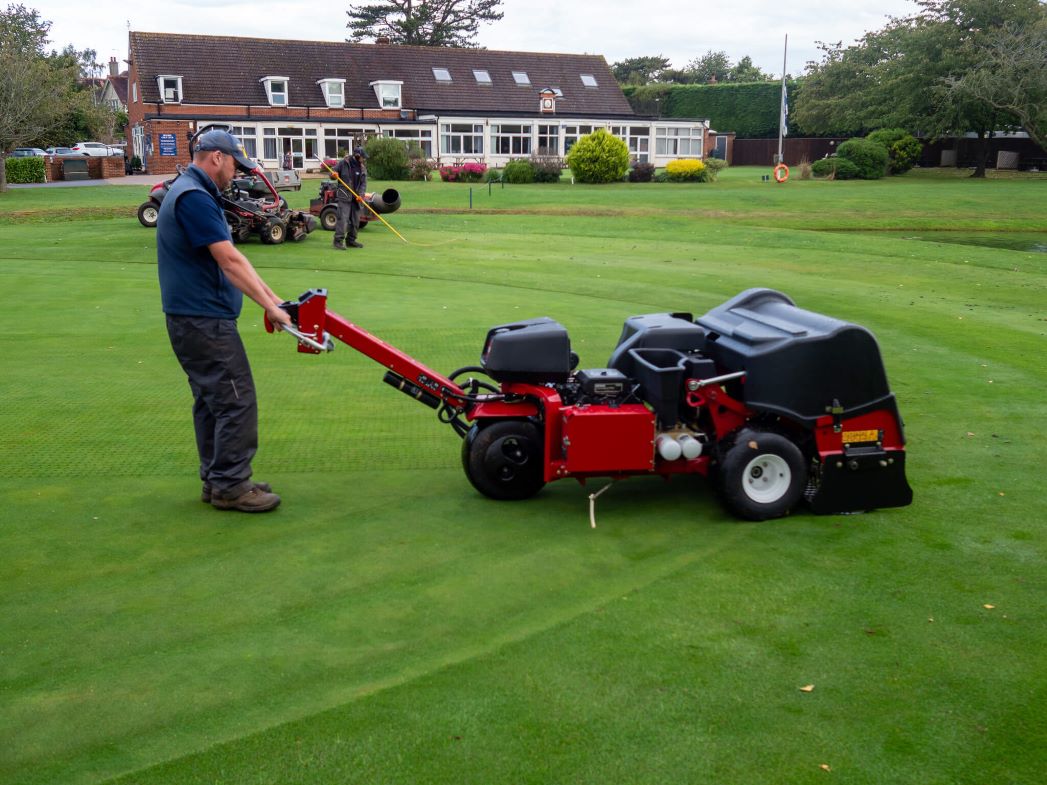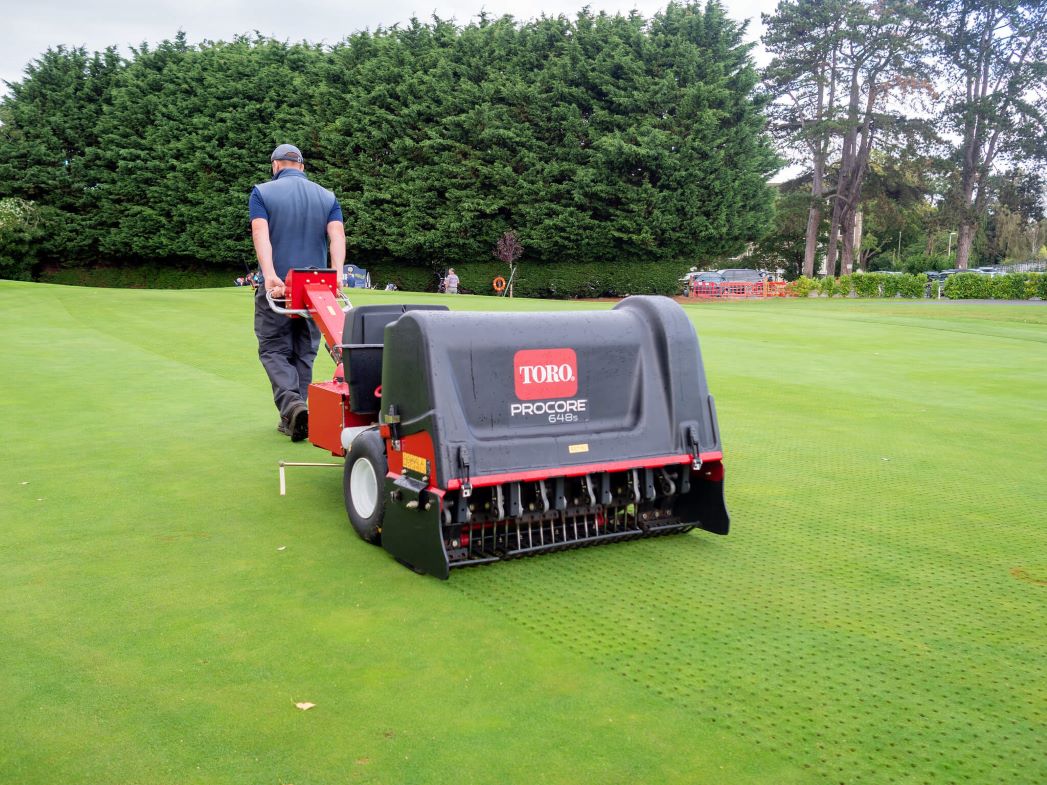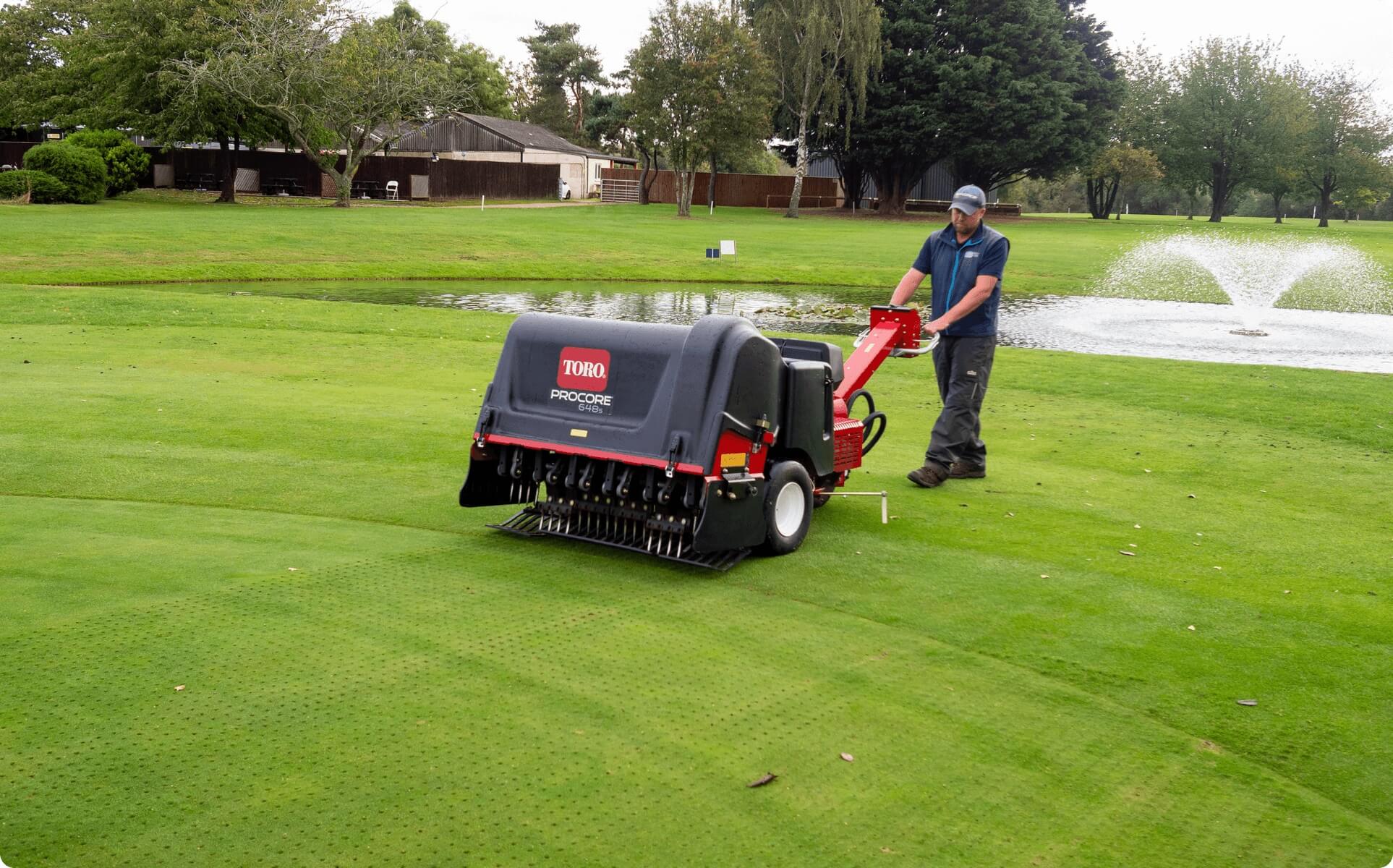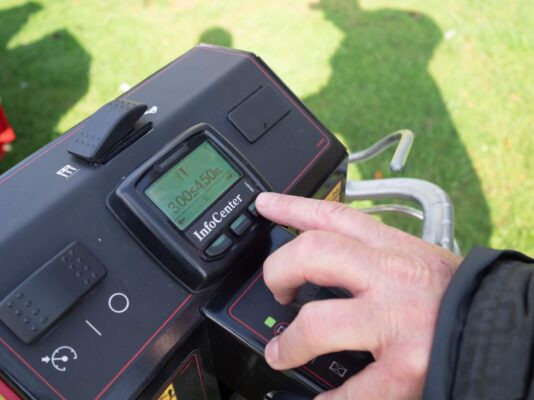Product test: Toro ProCore 648s
A little ‘s’ adds ease of use to proven coring punch.
Independent machinery tester James de Havilland puts the new ProCore 648s aerator
to the test and discovers that sometimes the smallest changes make the biggest difference.
First impressions
The ‘s’ added to the ProCore 648s is perhaps the smallest name change possible, but it is one that makes a big difference to working the machine.
The ProCore 648s is easier to set up and even better to operate than its well established, much loved 648 predecessor. Who’d have thought a lower caps s could make such a difference.
Among numerous refinements one that stands out is the Delayed Mode. Skilled operators may not think this feature is a big deal until they try it. In brief, this setting ensures the corer engages the ground where you want and at the full working forward speed. This eliminates the chance of dropping the corer into the ground just that little bit too soon and with it eliminates the chance of producing ‘oval’ holes at the start of the run. It also works at the other end, lifting the corer out just where you want it and again at the right speed to prevent the last part of the run risking turf tufting.
Summing up, the ProCore 648s makes the life of the operator easier. Calibrating the working depth is a doddle and achieving a consistent hole pattern, at both the start and finish of the run, is eased by the new Delayed Mode. Add improved controls and simplified settings to set the throttle and this model makes pedestrian coring a pleasure.
Pedestrian coring a pleasure
Over decade ago, Toro introduced the ProCore 648 pedestrian corer. Among its key features was the smooth operation of its 1.27m wide coring unit, this balanced six-crank corer accepting the full range of Toro Titan tines in each of it six tine heads. This element of the latest ProCore 648s has not been changed. What’s more, any accessory offered to fit the existing 648 models will work with the 648s too.
What has changed is the latest ProCore 684s is even easier to use than its predecessor, with much of this relating to the use of the electronically controlled drive. This clever system links the 674cc twin-cylinder petrol engine to the hydrostatic drive to ensure the forward speed is consistent and exactly matches the output of the coring head. An uneven green should have the holes punched into it at the same spacings, regardless of changes in slope.
In operation, another neat development is the ability to up the travel speed when turning the unit between passes without then having to worry that the working speed will be upset. All you have to do is raise the corer out of work and then press one of the pair of pads on the handles to up the speed. When aligned for the next pass, lowering the unit into work will revert to the correct operating speed, this being fixed to ensure consistent accuracy.
Although there is an option in the InfoCentre to switch off various features, one that few will want to tamper with is Delayed Mode. In broad outline, this system allows the front wheel to be used to set when the corer is lowered and raised. In work, this means you can pull up the lower control lever to drop the head when the front wheel is at the edge of the green, the unit only lowering when it reaches that point and vice versa at the other end.
This simple system has two advantages. First it ‘automatically’ raises and lowers the corer at the edge of the green or at a point where you want it to start working. Second, the forward speed of the machine is set at the working speed. This means you do not lower or raise the corer at the wrong speed, which helps to eliminate oval holes and turf tear at the start and finish of a run.
Setting up the PROCORE 648s to work with different types of tines and working depths is simplified. It takes longer to describe the set-up process than to actually do it, but in broad outline the procedures are controlled via the InfoCentre. Taking calibrating the working depth as an example, this is achieved by:
> Manually lowering the two outer tine banks
> Entering the calibration mode on the InfoCentre
> Select Teach Ground Height*
> Select Calibration engaged
> Select Lowering Head. Press OK as soon as the outer tines tips touch the ground
> Select Calibration complete. Job done
*Teach Ground Height is set in the system to tell the machine where the bottom of the tine is relative to the tine head so it can adjust its working depth to match the required depth put into the info centre settings. This ensures you are always working at the desired depth even when using worn tines.
In practice, doing the job the first time you may struggle to see when the tines touch the ground, and the job needs to be done on level ground, but once you go through the process a couple of times you will find it simple. Tine wear and adjusting the corer to accommodate it is faff but with this system most will be more inclined to carry it out.
There are other neat little features tucked away in the InfoCentre display. These include inputting the tine type and size fitted plus the selected working depth, so an operator knows exactly what the machine is set up to do. You don’t really need a manual to set the machine up once you know the basics but, if you do, a QR code decal on the machine enables this to be accessed via a tablet or smartphone.
Other details to note are the operator handle ‘floats’ to suit the operator and in storage can be locked up vertically to save some space. The full width control levers enable the unit to be worked with one hand and the steering lock has been increased to allow tighter turns.
Wheel scrub should not be a problem as the electronically controlled drive monitors the speed of the all-wheel drive system to ensure all three wheels speed is coordinated. Throttle settings are done via a rocker switch, with a cruise control setting allowing a faster pace for transport.
With thanks to Dougie Mac Gregor, head greenkeeper, Oxford Golf Club.

A low operating weight and the corer running being the smooth tyred wheels ensures the ProCore 648s can be used on the most sensitive of greens in less-than-ideal conditions. A mowing pass over the solid cored green saw it back in action in no time.

With Delayed Mode, the corer can be set so it is lowered back into work just at the point where the front wheel meets the edge of the green. The technology of Delayed Mode eliminates the risk of producing ‘oval’ holes at the start of the run.

The operator can turn around to work in either direction, the corer’s working speed being fixed to suit the application. The handle is free to float making it easier to work over undulating ground.

Setting the tine working depth is simple: select Tech ground Height on the InfoCentre.

Lowering the two outer tine banks.

Delayed Mode works when raising and lowering the corer into work.

Tines and spacing data is shown in the InfoCentre

Toro QR code provides access to the operator’s manual.
The end result




